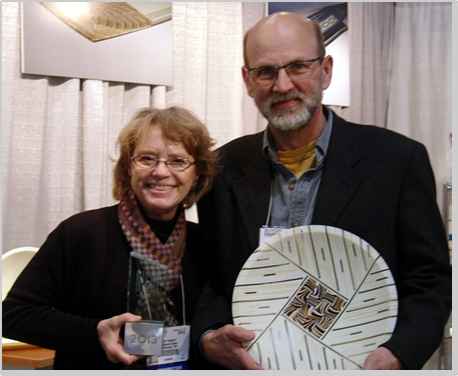Patti %26 Dave Hegland

As dedicated collectors of fine craft for over 20 years, Dave and Patti Hegland developed a strong sense of personal style and an appreciation of well-designed and well executed work well before making the decision to become professional artists. “In the back of our minds, we knew that someday we, too, would like to create fine craft at the quality level we were collecting. So, when the time came to leave behind our successful corporate careers in business (Patti) and engineering (Dave), we called on our analytical decision-making skills to answer the question of what type of fine craft would we create”, say Patti. They chose kiln glass. “As a fine craft, it is rapidly evolving, our technique lends itself to the geometric, structured design style that we gravitate towards, and we are comfortable working with the tools necessary to create the highly finished look we sought”, Dave adds.
They took their first kiln glass class in February 2009 which confirmed they had discovered their medium. A second class a few months later focused on the strip construction technique which offered the design control they were seeking in their art. Since then, they have taken numerous workshops at glass in New York, Washington DC, Oregon, and North Carolina and studied with outstanding artists in the field of kiln-formed glass to gain specific technical skills. They accredit their achievements as glass artists to the combination of that acquired knowledge coupled with the long hours in their studio exploring new designs and techniques.
Each piece of their art glass reveals their focus on the creativity of the design process, the technical challenge of construction, and the precision of coldworking. Their open designs reflect the rural horizons and lively waterways that surround them on the eastern shore of the Chesapeake Bay, resulting in works that flow across edge boundaries in the world beyond. Once designed, they begin their construction process by cutting large sheets of glass into narrow strips, laying them on edge and combining separately created inclusions, including hand-pulled murine, to form the piece. Once fused to a solid form in the kiln, they extensively shape, grind, sandblast, and polish to enhance the visual impact and feel of their finished vessels and sculpture.

